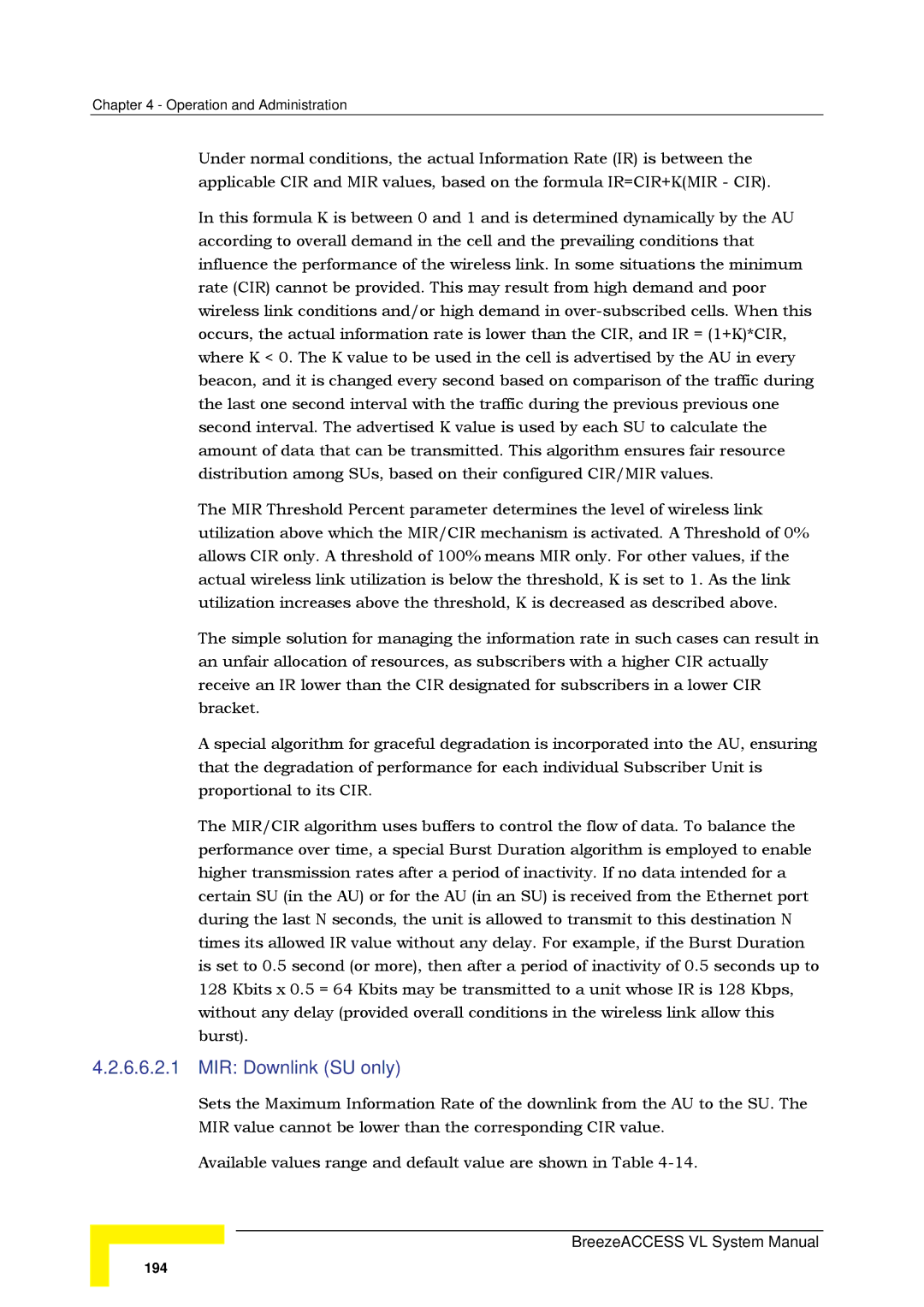
Chapter 4 - Operation and Administration
Under normal conditions, the actual Information Rate (IR) is between the applicable CIR and MIR values, based on the formula IR=CIR+K(MIR - CIR).
In this formula K is between 0 and 1 and is determined dynamically by the AU according to overall demand in the cell and the prevailing conditions that influence the performance of the wireless link. In some situations the minimum rate (CIR) cannot be provided. This may result from high demand and poor wireless link conditions and/or high demand in
The MIR Threshold Percent parameter determines the level of wireless link utilization above which the MIR/CIR mechanism is activated. A Threshold of 0% allows CIR only. A threshold of 100% means MIR only. For other values, if the actual wireless link utilization is below the threshold, K is set to 1. As the link utilization increases above the threshold, K is decreased as described above.
The simple solution for managing the information rate in such cases can result in an unfair allocation of resources, as subscribers with a higher CIR actually receive an IR lower than the CIR designated for subscribers in a lower CIR bracket.
A special algorithm for graceful degradation is incorporated into the AU, ensuring that the degradation of performance for each individual Subscriber Unit is proportional to its CIR.
The MIR/CIR algorithm uses buffers to control the flow of data. To balance the performance over time, a special Burst Duration algorithm is employed to enable higher transmission rates after a period of inactivity. If no data intended for a certain SU (in the AU) or for the AU (in an SU) is received from the Ethernet port during the last N seconds, the unit is allowed to transmit to this destination N times its allowed IR value without any delay. For example, if the Burst Duration is set to 0.5 second (or more), then after a period of inactivity of 0.5 seconds up to 128 Kbits x 0.5 = 64 Kbits may be transmitted to a unit whose IR is 128 Kbps, without any delay (provided overall conditions in the wireless link allow this burst).
4.2.6.6.2.1 MIR: Downlink (SU only)
Sets the Maximum Information Rate of the downlink from the AU to the SU. The MIR value cannot be lower than the corresponding CIR value.
Available values range and default value are shown in Table
BreezeACCESS VL System Manual
194
